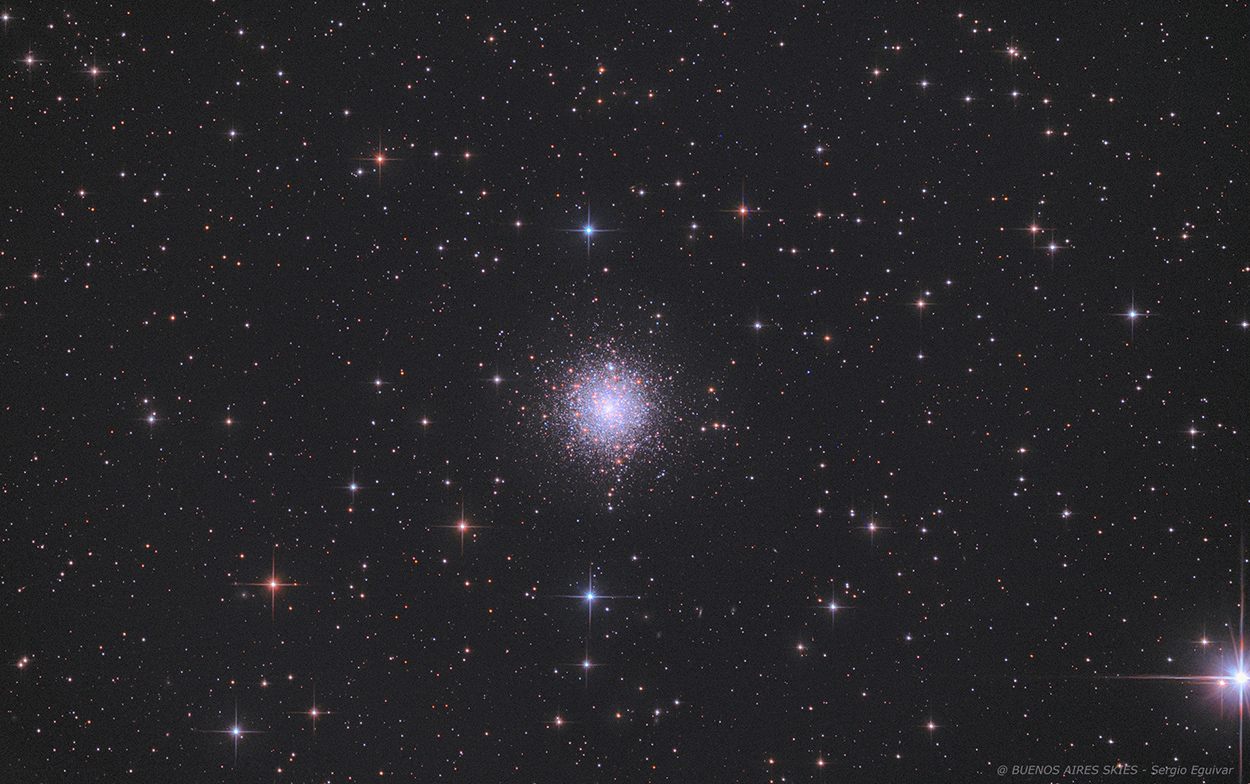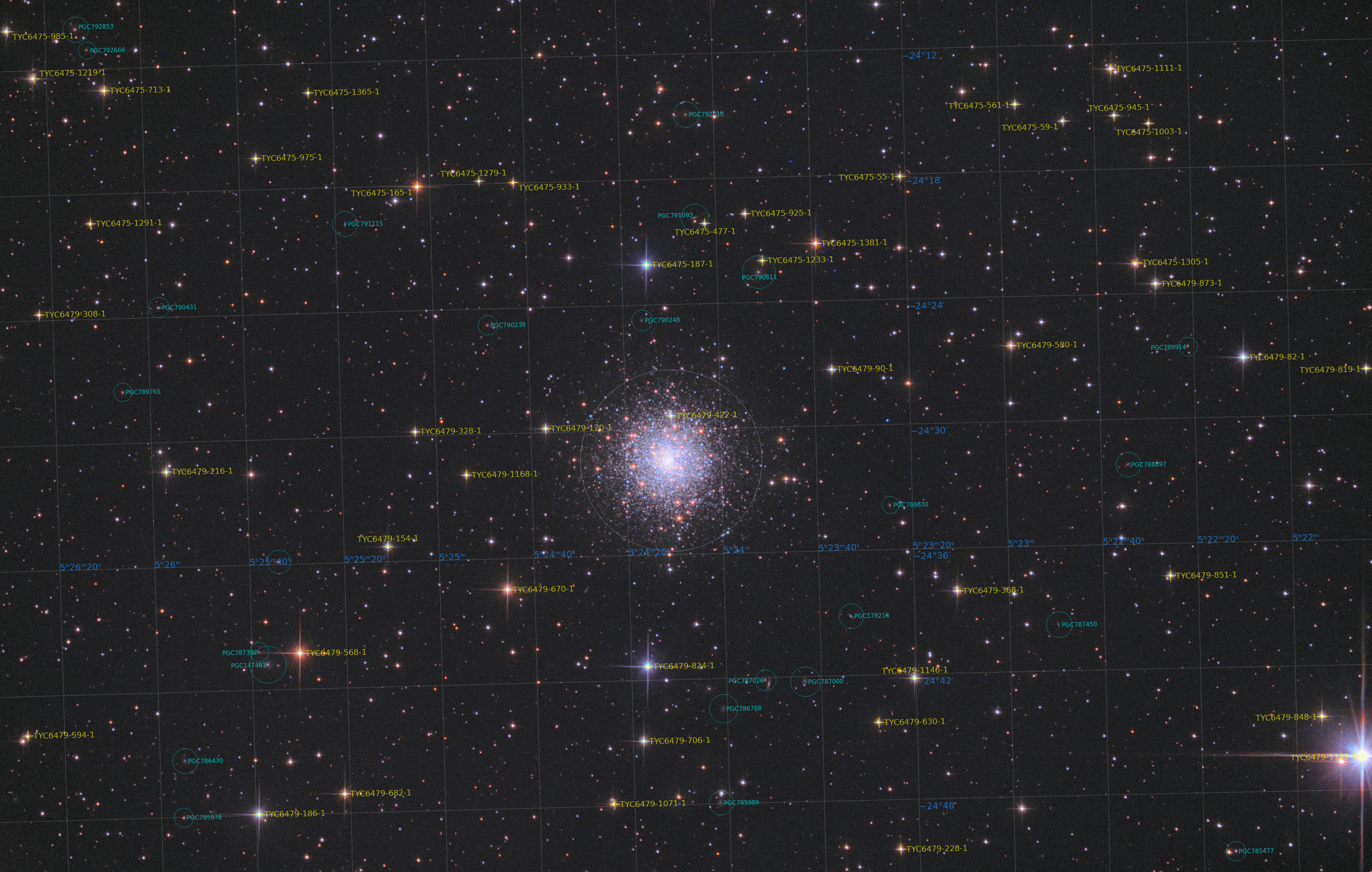
| HOME |
MESSIER 79
GLOBULAR CLUSTER IN LEPUS (THE HARE)
(Image centered at: ra 05h:24 m / dec -24º 31')
CLICK THE IMAGE FOR A HIGH RESOLUTION VIEW
ANNOTATED IMAGE 100% RESOLUTION
December 2024, Observatorio Cielos Albertnos, Buenos Aires, Argentina
DATA
TYPE: Globular Cluster
APPARENT DIAMETER: 9.6 arc minutes
APPARENT MAGNITUDE (V): 7.7
DISTANCE: 41000 light years
IMAGE INFORMATION
INSTRUMENT: Orion Optics UK 6" Newtonian with Ultra Grade Optics working at f 4.5
CAMERA: QHY 183 Mono Camera
MOUNT: Vixen GPDX with SkyWatcher motors drive. Guided off axis with QHY 5-II Mono Camera
FILTERS: Baader LRGB Set
SKY CONDITIONS: Bortle 2-3 skies
OBJECT DESCRIPTION AND IMAGE SESSION
M79 is a beautiful globular cluster at a quite unusual location in the sky: Most globulars are grouped around the Galactic center, but this is one of the few which are situated in the other hemisphere, i.e. it is beyond us for hypothetical observers in the central stellar bulge of our Milky Way galaxy. It is little over 40,000 light years from us, but about 60,000 light years from the galactic center. At this distance, M79's apparent diameter of 9.6 minutes of arc corresponds to a linear extension of about 118 light years.
M79 was found by French Mathematician Pierre Méchain on October 26, 1780, and reported his discovery to his friend and colleague, Charles Messier, who determined its position and included it in his catalog on December 17, 1780. It was first resolved into stars and recognized as a globular cluster by William Herschel in about 1784.
I had a couple of failures imaging this object from my light home backyard at bortle 8 skies. Fortunately we has some time left at bortle 3 skies, so I decided to have a try with this nice globular. The image came very nice and a great deal of distance galaxies labeled in the High Resolution image and grouped below
(*) text extracted from SEDS
MESSIER 79
GLOBULAR CLUSTER IN LEPUS
ANNOTATED IMAGE AT 100% RESOLUTION
